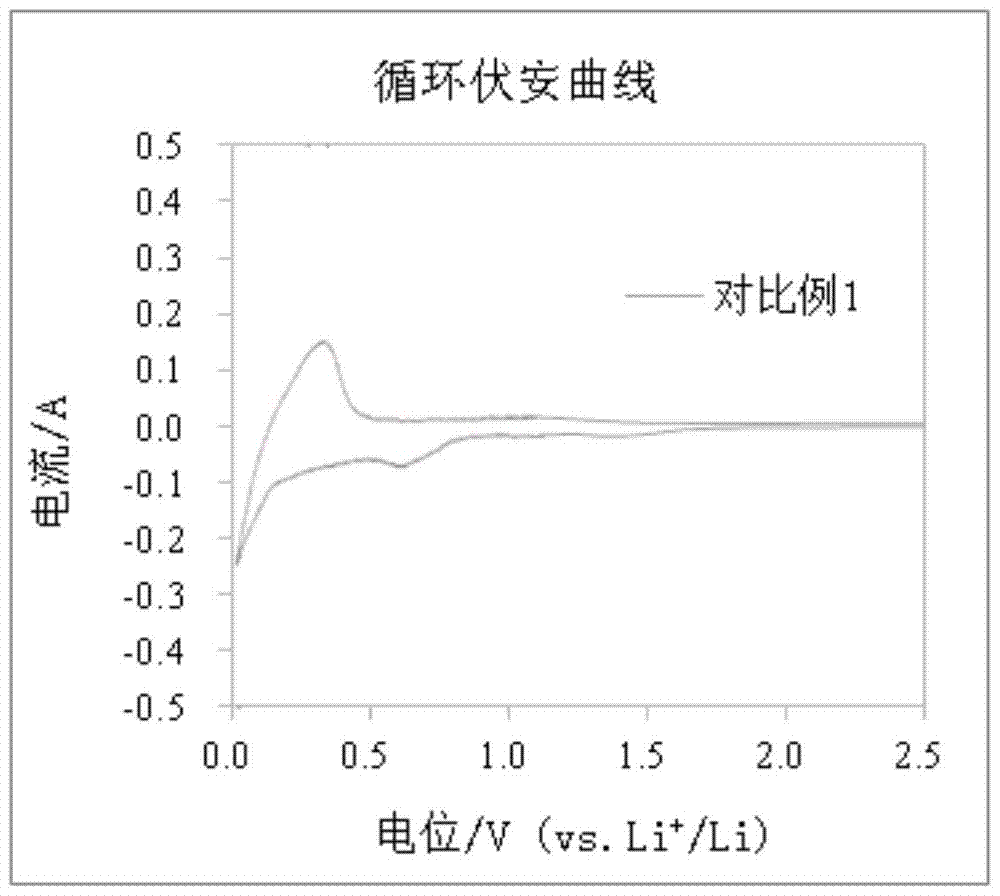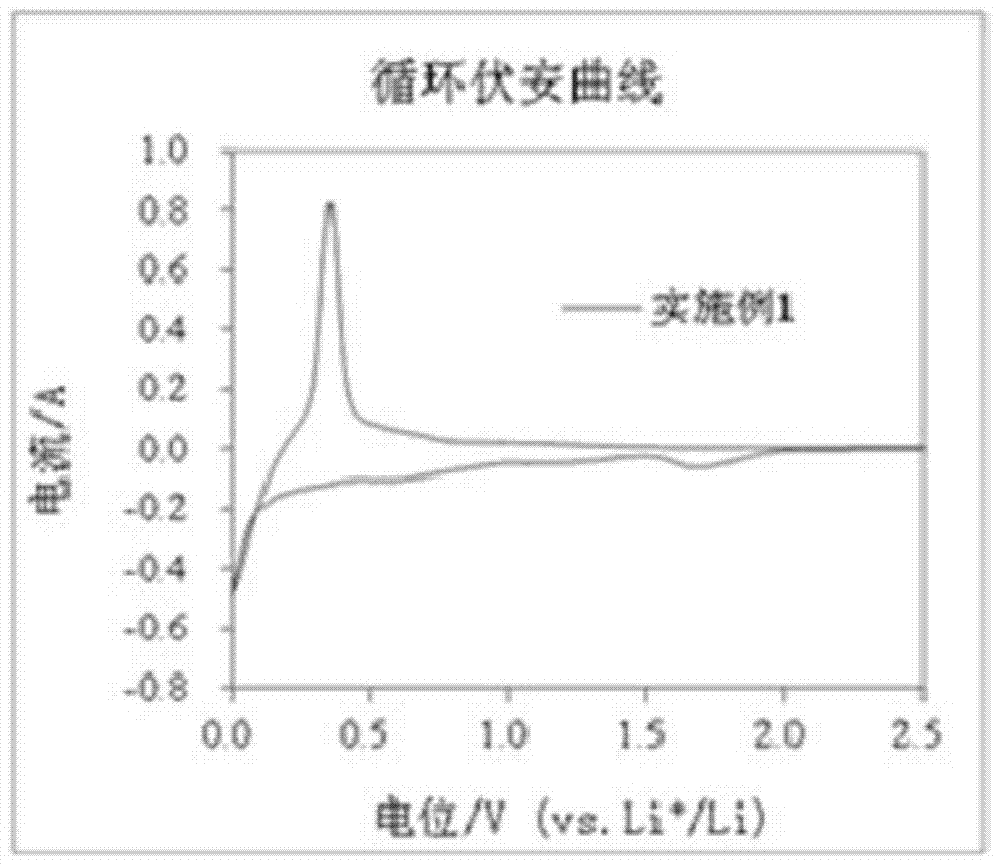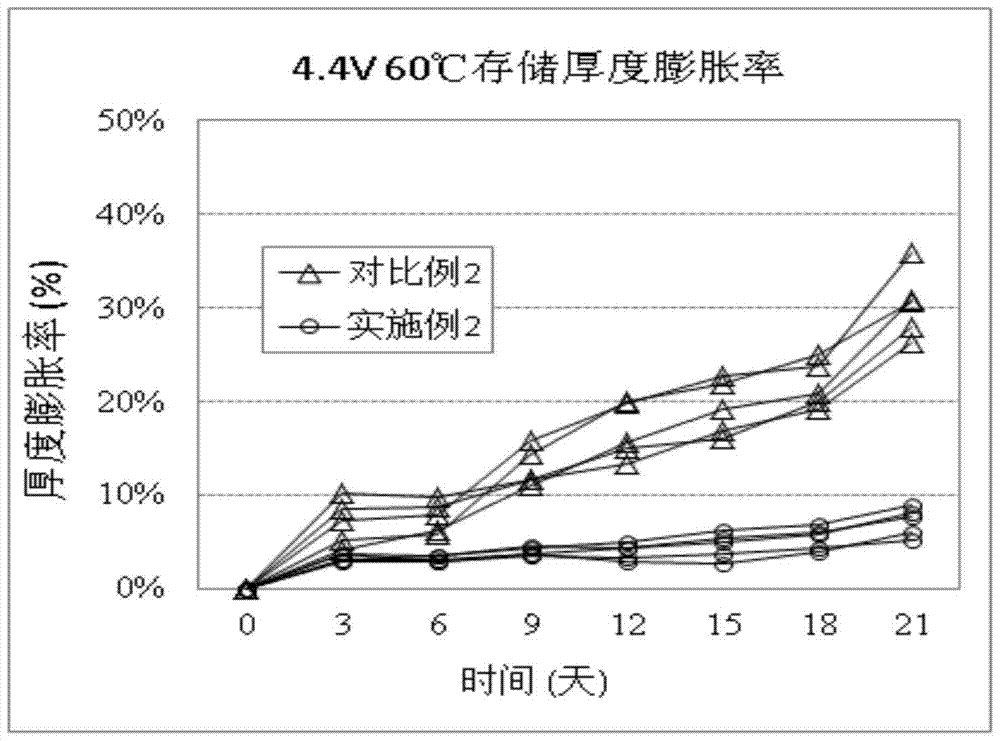Lithium-ion battery and its electrolyte
A lithium-ion battery and electrolyte technology, applied in the field of lithium-ion batteries and their electrolyte, can solve the problems of large thickness expansion and rapid capacity loss, and achieve the effects of reducing thickness expansion, improving oxidation resistance, and reducing oxidation
- Summary
- Abstract
- Description
- Claims
- Application Information
AI Technical Summary
Problems solved by technology
Method used
Image
Examples
Embodiment 1
[0040]Electrolyte preparation: in an argon atmosphere glove box with a water content 6 Dissolved in the above non-aqueous solvents to form LiPF 6 Electrolyte with a concentration of 1mol / L. Then, 3,4-dicyanophenyl mesylate with a mass ratio of 1% was added to prepare the lithium-ion battery electrolyte.
[0041] The preparation of the button cell is the same as that of Comparative Example 1, and will not be repeated here.
Embodiment 2
[0043] Preparation of electrolyte: In an argon atmosphere glove box with a water content 6 Dissolved in the above non-aqueous solvents to form LiPF 6 Electrolyte with a concentration of 1mol / L. Then, 3,4-dicyanophenyl mesylate with a mass ratio of 3% was added to prepare the lithium-ion battery electrolyte.
[0044] Preparation of lithium-ion batteries:
[0045] Fully stir the positive electrode active material lithium cobaltate (LiCoO2), conductive agent acetylene black, and binder polyvinylidene fluoride (PVDF) in an appropriate amount of N-methylpyrrolidone (NMP) solvent at a mass ratio of 96:2:2 Mix to form a homogeneous positive electrode slurry. The positive electrode slurry is evenly coated on the positive electrode current collector Al foil, dried and cold pressed to obtain the positive electrode sheet.
[0046] Negative electrode active material graphite, conductive agent acetylene black, binder styrene-butadiene rubber (SBR), thickener sodium carboxymethyl cellulo...
Embodiment 3
[0050] The difference between embodiment 3 and embodiment 2 is only the preparation of electrolyte: in the argon atmosphere glove box with water content6 Dissolved in the above non-aqueous solvents to form LiPF 6 Electrolyte with a concentration of 1mol / L. Then, 3,4-dicyanophenyl trifluoromethanesulfonate was added, and the mass of 3,4-dicyanophenyl trifluoromethanesulfonate accounted for 1% of the total mass of the electrolyte.
[0051] The rest are the same as in Embodiment 2, and will not be repeated.
PUM
 Login to View More
Login to View More Abstract
Description
Claims
Application Information
 Login to View More
Login to View More - R&D
- Intellectual Property
- Life Sciences
- Materials
- Tech Scout
- Unparalleled Data Quality
- Higher Quality Content
- 60% Fewer Hallucinations
Browse by: Latest US Patents, China's latest patents, Technical Efficacy Thesaurus, Application Domain, Technology Topic, Popular Technical Reports.
© 2025 PatSnap. All rights reserved.Legal|Privacy policy|Modern Slavery Act Transparency Statement|Sitemap|About US| Contact US: help@patsnap.com



